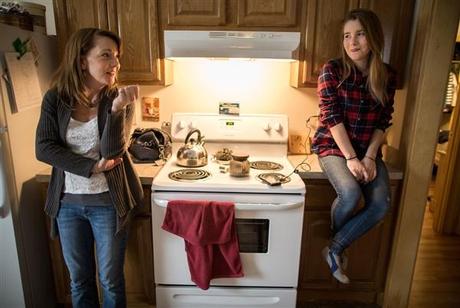The face of poverty in America is no longer just urban and black/brown.
The new face of poverty in America is suburban and white.
A study by the Brookings Institution finds that the rate of growth of poverty in America’s suburbs is more than double the growth rate in urban areas.

Allison Linn reports for NBC News, March 22, 2013, that according to a Brookings Institution analysis of 95 of the nation’s largest metropolitan areas, the number of suburban residents living in poverty rose by nearly 64% between 2000 and 2011, to about 16.4 million people. That’s more than double the rate of growth for urban poverty in those areas.
“I think we have an outdated perception of where poverty is and who it is affecting,” said Elizabeth Kneebone, a fellow at the Brookings Institution and co-author of the research. “We tend to think of it as a very urban and a very rural phenomenon, but it is increasingly suburban.”
Among America’s new suburban poor is single mother Tara Simons, who moved to suburban West Hartford because she wanted her daughter to grow up in a nice, safe place with good schools. Simons had a bout of unemployment and couldn’t find a new job that paid as well.
Simons’ situation is complicated by the fact she’s a single mom. Poverty and financial insecurity among single moms is far higher than for households headed by single dads or two parents.
The rate of poverty among single mothers actually improved dramatically through the 1990s, thanks to a strong economy, more favorable tax breaks and the success of so-called welfare-to-work programs. But two recessions and years of high unemployment erased many of those gains.
Simons had a good job with a rug retailer, but about a year ago she quit after disputes with one of the two owners. She had never had trouble finding a new job and was unprepared for how hard it would be. “I know that part of it is my fault and I absolutely take responsibility for that, but I never in a million years thought that I would (be in this position),” she said.
Simons went without work or unemployment benefits for five months before she got her current job about six months ago. The position, as a customer service representative for a local health products company, pays $14 an hour. That leaves her with take-home pay of about $460 to $480 a week, plus about $127 a week in child support. Simons has full custody of her daughter. She went on Medicaid after being unable to afford health insurance.
Like many working poor people, she has fallen into a debt spiral. She is behind on her electric and gas bills and owes nearly $400 to her daughter’s club lacrosse team. She took out an $800 payday loan, and she estimates that it will end up costing her $1,600 to pay it back. She also has several hundred dollars in credit card debt and has worked to pay off hundreds of dollars in bank overdraft fees. She’s sold jewelry for cash.
She and Alexis had to leave the house they were renting after she lost her job and a roommate. She got one-time aid from the city’s crisis fund to help with the down payment for her new, cheaper apartment. Still, the $1125 rent eats up more than half of her monthly take-home pay.
West Hartford is a picturesque suburb, with its well-kept homes, upscale town center, and a median household income of $80,061, more than double that of Hartford itself, which is $29,107 according to the Census Bureau.
And yet the number of people needing help has skyrocketed in recent years, said Susan Huleatt, the human services manager for West Hartford.
~Eowyn

